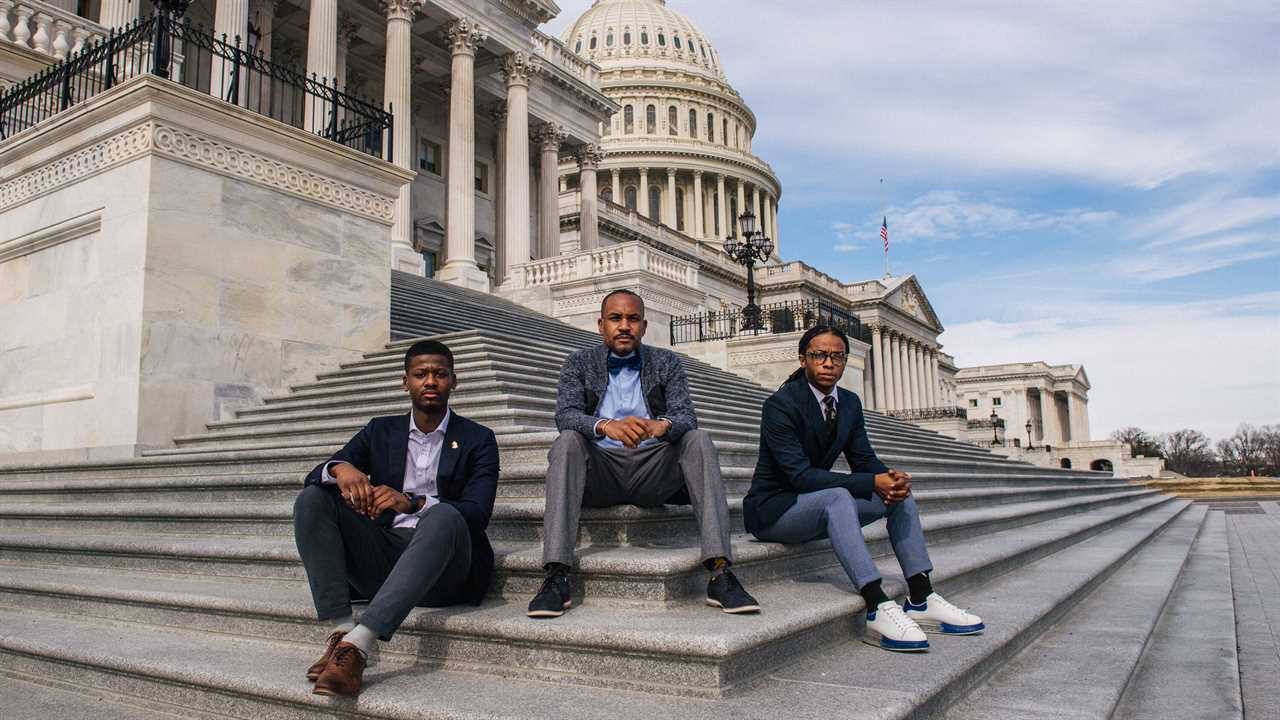
WASHINGTON — Jabir McKnight woke up on the morning of Jan. 6 with an uneasy feeling.
The day before had been great: He and another congressional staff member had celebrated Founders Day for their historically Black fraternity, Kappa Alpha Psi. But as Mr. McKnight walked that Wednesday to Capitol Hill, where he had always felt safe, images of white supremacist violence in Charleston, S.C., and Charlottesville, Va., began to race through his head.
Hours before the violent pro-Trump mob rampaged through the halls of Congress, leaving nearly 140 police officers injured and five people dead, Mr. McKnight recalled, he could not shake the sense that something very bad was about to happen.
“The writing was on the wall for this,” said Mr. McKnight, 23, who is the communications director for Representative Sheila Jackson Lee, Democrat of Texas.
He pointed to examples of right-wing violence in recent months and years. “For Black staffers, it’s a little bit different, because a lot of these attacks are directed toward our people,” he said. “We’ve seen these things happen over and over and over again. I don’t think we were blinded that people who are domestic terrorists would say, ‘Oh, it’s the Capitol, we’ll stop there.’”
Symbols of racism and white supremacy were on full display at the Capitol on Jan. 6. Rioters paraded the Confederate battle flag through the halls. One man wore a “Camp Auschwitz” sweatshirt, while others flew the flag of the fictional country Kekistan, which mimics a Nazi war flag.
Black Capitol Police officers have described the intense racism they endured from the mob; one told Buzzfeed News he was called a racist slur 15 times, causing him to break down in tears.
Only a small percentage of congressional aides are Black. Since the attack, Mr. McKnight and others who were in nearby offices in the Capitol complex that day have been talking among themselves about how close the violence came to them, what it means to experience such a virulent expression of racism in what is supposed to be a citadel of liberty, and the suspicion they now feel toward other aides, members of Congress and random people they encounter as they go about their business on Capitol Hill.
“It makes the trauma worse,” Mr. McKnight said. “Because as you’re walking around, you don’t know who could have been involved with what.”
For some Black staff members, the Capitol attack brought back memories of how they had tried to avoid people they felt could be prone to racist violence — only to find them at their place of work.
“This was the ugliest display of racism that I’ve seen ever. And I’m from the South,” says Remmington Belford, 30, the communications director for Representative Yvette D. Clarke, Democrat of New York. “There’s a specific demographic of people that you know conduct themselves that way, and you find your way away from them. Those people came to Capitol Hill. The people who believe in supremacy due to genetics were on Capitol Hill, and they were armed, and they were incensed.”
The staff members described feelings of fear about the physical threat and anger about the psychic damage done by the mob.
“I never though I’d see the Confederate flag walked through the halls of Congress,” said Mike McQuerry, 50, the communications director for Delegate Stacey Plaskett, Democrat of the Virgin Islands and an impeachment manager in the trial of former President Donald J. Trump. “As much as we think we’ve had progress, we haven’t progressed that much.”
Mr. McQuerry said that white rioters, using force and rage, gained access to parts of the Capitol that had always been off-limits to him, like Speaker Nancy Pelosi’s office or the floor of the Senate.
“Those insurgents got to places where we as staffers couldn’t go,” he said, “places we wouldn’t even think about going.”
Mr. McKnight, Mr. Belford and Mr. McQuerry watched the worst of the violence as they were fortified in their offices in the Rayburn Building on the House side of the Capitol complex.
“The fear was very present,” Mr. Belford said, adding that he had planned two escape routes, including rushing through a window. “As far as close? They were steps away. Let’s be very clear. There’s no force that protects us in Rayburn” once the rioters breached the Capitol.
“We were fortified in our offices,” Mr. McKnight said. “You don’t know what’s on the other side of the door. You never knew what was on the other side. We were worried about any sound we heard. Are they here? Are they in the building? The only time you would have known is when it was too late. Everyone was terrified.”
As they watched the mayhem that day, the aides said, they feared for their lives, realizing that not only lawmakers could be attacked but so could they.
After the siege, congressional aides have reported trouble sleeping and feeling anxious, claustrophobic, angry and depressed. Lawmakers have requested additional resources to support the mental health needs of employees in response to surging demand.
“It was the first time I realized that post-traumatic stress syndrome is a thing,” said Mr. Belford, who is from Houston. “We as staffers are still dealing with the trauma.”
Despite what they experienced that day, Mr. McQuerry, who is from Detroit, said staff members felt an obligation to push on with work.
“There’s not that many of us that work up here,” he said of Black aides to members of Congress. “It’s affected us tremendously. We have to just push through. I think we deal with it every day. PTSD is really real.”
During the riot, some Democratic lawmakers said they thought they might be able to blend in with Republican members of Congress to avoid the violence. Representative Dean Phillips, Democrat of Minnesota, said recently on the House floor that he recognized his privilege when this thought occurred to him.






